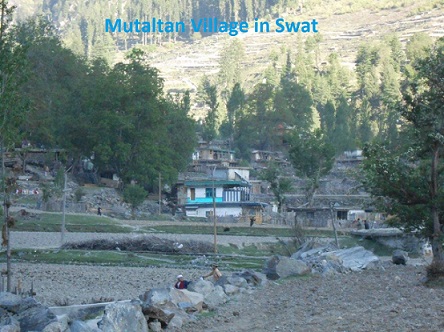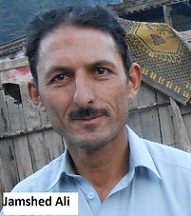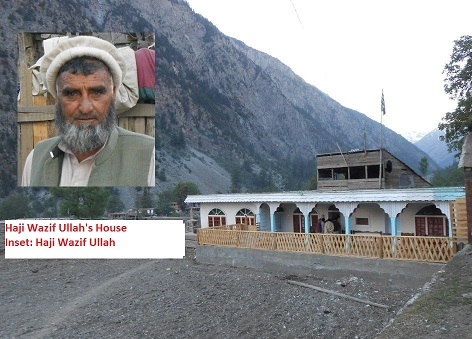Mini-Chitral in Swat
Fakhrud Din Akhunzada
(23-07-2013)

As a Khowar speaker, when I passed through Osho valley in Upper Swat, I felt a spirit of kinship. The sign boards, language and house structures surrounding all assured me that I was in Chitral. The bond further tightened when Hajji Wazif Ullah invited me for a trup chai. Within the next ten minutes, his guest-room filled with people, all of whom spoke Khowar.
Osho valley is situated 100 km north of Mingowara city near Kalam (Bashqar). It is a lush green valley situated at an altitude of 8000 feet above sea level. Osho and Mataltan are two main villages where Khowar speakers reside. Kho people immigrated to the valley 100 years ago from Upper Chitral but have still maintained their mother tongue in its pure form.
The population of the Kho people is between 1500 and 1800 and they are spread over two main villages, Mataltan and Osho, with some having migrated to the lower villages. The number of Khowar speakers is equal to one fourth of the Gawri (Bashqarik) speakers, the dominant language in the valley. Both Kho and Gawri have equal rights to the land, pastures, timber and the oak forest. The area gets a heavy snow fall in the winter (some times more than 15 feet) and the Gawri people leave the area for winter to go to the warmer areas, but the Kho people remain the whole winter in their home valley.

The Kho people have immigrated to the area from Chitral through Bashqar Gol, a foot pass which links Swat with Laspur of Upper Chitral. It takes three days to reach Laspur from the valley. It is not exactly known when they migrated to the area from Chitral. According to Haji Wazif Ullah, they came 500 years ago. Jamshid links his lineage six generations back to Chitral. Their population is divided into four lineages: Zhikane, Azamor, Khotike and Nadre. Zhikane and Azamor are descendants of two brothers and their apical ancestor is related to the "Khoshiye" clan of Chitral. According to Haji Wazif Ullah, who is a 55-year-old man and a member of this lineage, they have immigrated to the area from Mulkhow. He says that the reas on for migrating was the begari (forced labouring) of the traditional rulers. Khotike, as the name reflects, came from Khot valley in Chitral. According to Jamshid Ali, a 35 year-old teacher and member of the lineage, the apical ancestor of this lineage belongs to the "Bayeeke" clan of Chitral.

The people in these villages still consider themselves part of Chitral. One can see sign boards and vehicles with texts such as "Chitral General Store" and "Chitral Group". They enjoy recounting stories from their visits to Chitral and happily relate accounts of which people from Chitral have visited their area. Some men have also married women from Chitral. The Khowar language is still very much alive in this area. I did not found many lexical differences between their variation of Khowar and my own. The only difference I found in my conversation with Jamsheed is that he said "Khowar doni", while in my dialect of Khowar I would say "Khowar koni". But the accent of the language is quite different and closer to that of the Gawri language. Their way of speaking reminded me of the Khowar of Gawar (Arandui) people of Chitral. The people in this valley are also fluent in the Gawri and Pashto languages. I learned that almost all Kho people can also speak Gawri.
People here also listen to Khowar music recorded in Chitral, but there is no Khowar singing tradition in the area itself. Mr. Jamsheed said, "in a music program in the village, Gawri people sing in Gawri language while we (Kho men) only clap our hands and dance".
 The writer is cultural researcher, author and Executive Director at Forum for Language Initiatives (FLI), Islamabad.
The writer is cultural researcher, author and Executive Director at Forum for Language Initiatives (FLI), Islamabad.He can be accessed at facebook.com/fakhruddin.akhunzada
A Website on the Culture, History and Languages of Chitral.
Contact: mahraka.mail@gmail.com
